Rare Films of the Collins Pantomimes
For his own amusement Horace filmed excerpts of several of the Collins pantomimes between 1931 and 1938. These were filmed on Kodak 16mm cinefilm which was very expensive to buy in those days. Even more expensive would have been the colour film, which Horace used to capture some of the magic of his pantomimes ‘The Queen of Hearts’ and ‘The 40 Thieves’. These rare films did not have sound so sadly the music, the banter and the laughter have been lost but what he did capture is a very rare archive of Scottish panto and some of it’s stars, amongst them: Dave Willis, GH Elliot, Jack Anthony, Florrie Forde and Harry Gordon. These films have been donated to the Scottish Film Archive of Glasgow University and are presented here for your pleasure.
‘Forty Thieves’ starring Dave Willis, filmed at the Edinburgh Theatre Royal during it’s 1931-1932 run.
‘Sinbad the Sailor’ starring Dave Willis, filmed at the Glasgow Pavilion Theatre during it’s 1936-1937 run.
‘Babes in the Wood’ starring Harry Gordon, filmed at the Edinburgh Theatre Royal during it’s 1936-1937 run.
‘Forty Thieves’ starring GH Elliot & Jack Anthony, filmed at the Glasgow Pavilion Theatre during it’s 1937-1938 run.
‘The Queen of Hearts’ starring Florrie Forde, filmed at the Edinburgh Theatre Royal during it’s 1937-1938 run.

The Collins Scenic Workshop and the Art of Bill Grayson
As the Collins Theatrical business bloomed more and more pantomimes and reviews were being staged a huge quantity of scenery and costumes was required. Fred and Horace realised that the stage area of the Theatre Royal in Edinburgh was unusually deep and as only the front half was ever seen by an audience they decided to create a scenic workshop at the rear where, for a quarter of a century, a wonderland of scenic splendour was designed and created to feed all the ‘Collins’ productions.
At the same time, to the rear of the same building block, six large residential flats were purchased and transformed into a theatrical wardrobe where costumes were designed, manufactured and stored throughout the year. In addition to show wear, authentic apparel such as uniforms, formal dress and kilts were collected as they became available and the whole was completed by a wiggery mainly of period and character pieces.
After a few years the role of Head Scenic Designer was passed from Stanley Shuter to the talented and affable artist Bill Grayson. Bill designed and painted all year round designing scenes and making the scenery from scratch. The air was often suffused with the smell of primer drying on virgin canvas before painting commenced and old canvases were often over-painted giving them a new lease of life at a very substantial saving. Bill had, as required, the assistance of joiners, odd job men and electricians, who would create many wonderful effects to dazzle the crowds. All of this artistry was then transformed with the clever use of coloured lighting which could magically transform a scene from scary to sunny at the flick of a switch.
Bill’s work was also his hobby. Randle Collins recalled during the war years of the 40’s his father often coming home and saying to him “Bill says this is for you.” handing his boy a beautiful hand-made ship or plane and on one occasion a complete electrified 3′ cubed model theatre, all parts fully functional, complete to the last detail with scenery, working flies, lighting controls and paper marionettes to grace it’s stage.
Thankfully, Horace thought it wise to keep a photographic inventory of Bill Grayson’s creations between 1940 and 1956. 180 scenes were documented over 16 pantomimes which delighted the patrons of Glasgow, Edinburgh, Dundee, Aberdeen and Liverpool.
As wonderful as it is to have this rare record the only sad point is that the photographs are in black and white. We can only imagine now how cheering it was for audiences in war-time Britain to escape their dour reality for a few hours to delight in the colourful happy world of pantomime.
We present these scenes here for your pleasure.
Ali Baba and the Forty Thieves (1940-1941)
-
Market Place Baghdad
Ali Baba and the Forty Thieves (1940-1941) Market Place Baghdad
-
Outskirts of City
Ali Baba and the Forty Thieves (1940-1941) Outskirts of City
-
Outskirts of Cave
Ali Baba and the Forty Thieves (1940-1941) Outskirts of Cave
-
Casim's Mansion House
Ali Baba and the Forty Thieves (1940-1941) Casim's Mansion House
-
Inside the Robber's Cave
Ali Baba and the Forty Thieves (1940-1941) Inside the Robber's Cave
-
Ali's Humble Home
Ali Baba and the Forty Thieves (1940-1941) Ali's Humble Home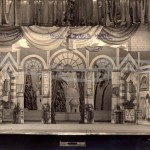
-
A Street in Baghdad
Ali Baba and the Forty Thieves (1940-1941) A Street in Baghdad
-
Ali Baba's Courtyard
Ali Baba and the Forty Thieves (1940-1941) Ali Baba's Courtyard
-
The Ganem's Palace
Ali Baba and the Forty Thieves (1940-1941) The Ganem's Palace
Aladdin (1941-1942)
-
Market Place, Pekin
Aladdin (1941-1942) Market Place, Pekin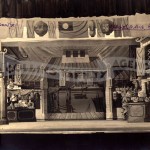
-
Street in Pekin
Aladdin (1941-1942) Street in Pekin
-
Widow Twankey's Laundry
Aladdin (1941-1942) Widow Twankey's Laundry
-
Outside the Cave (Great Wall of Rhina)
Aladdin (1941-1942) Outside the Cave (Great Wall of Rhina)
-
Inside the Magic Cave
Aladdin (1941-1942) Inside the Magic Cave
-
Emperor's Throne Room
Aladdin (1941-1942) Emperor's Throne Room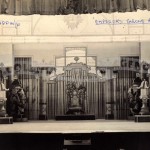
-
Chinese Lacquer
Aladdin (1941-1942) Chinese Lacquer
-
Courtyard, Aladdin's Palace
Aladdin (1941-1942) Courtyard, Aladdin's Palace
-
Willow Pattern Land
Aladdin (1941-1942) Willow Pattern Land
Dick Whittington (1942-1943)
-
Old Cheapside
Dick Whittington (1942-1943) Old Cheapside
-
A Street in London
Dick Whittington (1942-1943) A Street in London
-
Inside Fitzwarren's Stores
Dick Whittington (1942-1943) Inside Fitzwarren's Stores
-
On the way to Highgate
Dick Whittington (1942-1943) On the way to Highgate
-
Highgate Hill
Dick Whittington (1942-1943) Highgate Hill
-
Bound for Morocco
Dick Whittington (1942-1943) Bound for Morocco
-
Tween Decks
Dick Whittington (1942-1943) Tween Decks
-
Palace of Emperor of Morocco
Dick Whittington (1942-1943) Palace of Emperor of Morocco
-
Back Pan Cloth
Dick Whittington (1942-1943) Back Pan Cloth
-
Finale
Dick Whittington (1942-1943) Finale
Robinson Crusoe (1943-1944)
-
Port O' Hull
Robinson Crusoe (1943-1944) Port O' Hull
-
All At Sea
Robinson Crusoe (1943-1944) All At Sea
-
Aboard the Bounding Bloater
Robinson Crusoe (1943-1944) Aboard the Bounding Bloater
-
Tableau
Robinson Crusoe (1943-1944) Tableau
-
Davie Jones' Locker
Robinson Crusoe (1943-1944) Davie Jones' Locker
-
On the isle of Wallamaloo
Robinson Crusoe (1943-1944) On the isle of Wallamaloo
-
A Tropical Glade
Robinson Crusoe (1943-1944) A Tropical Glade
-
At the Jungle Dentist
Robinson Crusoe (1943-1944) At the Jungle Dentist
-
Robinson Crusoe's Island Home
Robinson Crusoe (1943-1944) Robinson Crusoe's Island Home
-
Robinson Crusoe's Palace
Robinson Crusoe (1943-1944) Robinson Crusoe's Palace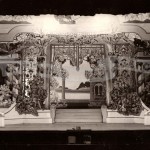
Babes in the Wood (1944-1945)
-
The Village of Sunny Dell
Babes in the Wood (1944-1945) The Village of Sunny Dell
-
A Street in Sunnydell
Babes in the Wood (1944-1945) A Street in Sunnydell
-
The Village School
Babes in the Wood (1944-1945) The Village School
-
On the Way to the Woods
Babes in the Wood (1944-1945) On the Way to the Woods
-
The Gates of Fairyland
Babes in the Wood (1944-1945) The Gates of Fairyland
-
Fairyland
Babes in the Wood (1944-1945) Fairyland
-
The Robin's Retreat
Babes in the Wood (1944-1945) The Robin's Retreat
-
In the Depth's of the Forest
Babes in the Wood (1944-1945) In the Depth's of the Forest
-
The Baron's Castle
Babes in the Wood (1944-1945) The Baron's Castle
-
The Village Store
Babes in the Wood (1944-1945) The Village Store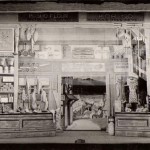
-
Santa Claus Land
Babes in the Wood (1944-1945) Santa Claus Land
Puss in Boots (1945-1946)
-
An Old Spanish Mill
Puss in Boots (1945-1946) An Old Spanish Mill
-
A Street in Spain
Puss in Boots (1945-1946) A Street in Spain
-
Market Square of old Barcelona
Puss in Boots (1945-1946) Market Square of old Barcelona
-
The Pool in the Forest
Puss in Boots (1945-1946) The Pool in the Forest
-
Interior of the Bull Ring
Puss in Boots (1945-1946) Interior of the Bull Ring
-
The Golden Cornfields
Puss in Boots (1945-1946) The Golden Cornfields
-
The Ogre's Mystic Study
Puss in Boots (1945-1946) The Ogre's Mystic Study
-
Outside the Castle
Puss in Boots (1945-1946) Outside the Castle
-
A Peep into the Future
Puss in Boots (1945-1946) A Peep into the Future
-
Grand Hall in the Castle
Puss in Boots (1945-1946) Grand Hall in the Castle
Red Riding Hood (1946-1947)
-
Merryvale Village Green
Red Riding Hood (1946-1947) Merryvale Village Green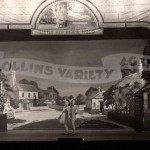
-
A Village Street
Red Riding Hood (1946-1947) A Village Street
-
The Wolf's Lair
Red Riding Hood (1946-1947) The Wolf's Lair
-
A Path in the Wood
Red Riding Hood (1946-1947) A Path in the Wood
-
The Pine Forest
Red Riding Hood (1946-1947) The Pine Forest
-
Winter Wonderland
Red Riding Hood (1946-1947) Winter Wonderland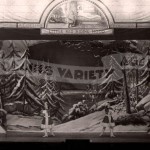
-
Land of the Butterflies
Red Riding Hood (1946-1947) Land of the Butterflies
-
The Village Hall
Red Riding Hood (1946-1947) The Village Hall
-
Buttercup Lane
Red Riding Hood (1946-1947) Buttercup Lane
-
Grannie's Cottage
Red Riding Hood (1946-1947) Grannie's Cottage
-
A Room at the Palace
Red Riding Hood (1946-1947) A Room at the Palace
-
Carnival Time
Red Riding Hood (1946-1947) Carnival Time
Aladdin (1947-1948)
-
Street in Pekin
Aladdin (1947-1948) Street in Pekin
-
Pekin Bazaar
Aladdin (1947-1948) Pekin Bazaar
-
Widow Twankey's Laundry
Aladdin (1947-1948) Widow Twankey's Laundry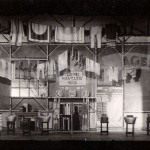
-
The Great Wall
Aladdin (1947-1948) The Great Wall
-
Inside the Magic Cave
Aladdin (1947-1948) Inside the Magic Cave
-
The Magic Lamp
Aladdin (1947-1948) The Magic Lamp
-
Aladdin's Palace
Aladdin (1947-1948) Aladdin's Palace
-
Aladdin's Palace
Aladdin (1947-1948) Aladdin's Palace
-
The Royal Gardens
Aladdin (1947-1948) The Royal Gardens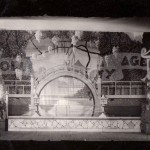
-
Willow Pattern Land
Aladdin (1947-1948) Willow Pattern Land
-
The Jungle Garden
Aladdin (1947-1948) The Jungle Garden
-
Aladdin's Palace
Aladdin (1947-1948) Aladdin's Palace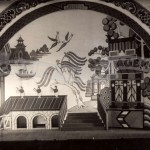
Goldilocks and the Three Bears (1948-1949)
-
The Village
Goldilocks and the Three Bears (1948-1949) The Village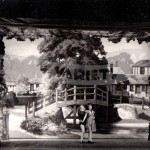
-
A Street in the Village
Goldilocks and the Three Bears (1948-1949) A Street in the Village
-
At the Theatre
Goldilocks and the Three Bears (1948-1949) At the Theatre
-
Into the Woods
Goldilocks and the Three Bears (1948-1949) Into the Woods
-
Journey into Space
Goldilocks and the Three Bears (1948-1949) Journey into Space
-
Journey into Space(Finale)
Goldilocks and the Three Bears (1948-1949) Journey into Space(Finale)
-
Petrolengo's Caravan
Goldilocks and the Three Bears (1948-1949) Petrolengo's Caravan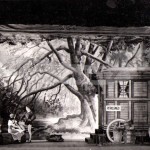
-
The Bear's Cottage
Goldilocks and the Three Bears (1948-1949) The Bear's Cottage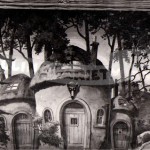
-
The Bear's Kitchen
Goldilocks and the Three Bears (1948-1949) The Bear's Kitchen
-
Poosie Nancy's Inn
Goldilocks and the Three Bears (1948-1949) Poosie Nancy's Inn
-
The Palace
Goldilocks and the Three Bears (1948-1949) The Palace
Robinson Crusoe (1949-1950)
-
Port O' Hull
Robinson Crusoe (1949-1950) Port O' Hull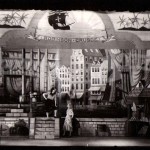
-
All At Sea
Robinson Crusoe (1949-1950) All At Sea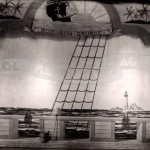
-
The Ship's Deck
Robinson Crusoe (1949-1950) The Ship's Deck
-
Tableau
Robinson Crusoe (1949-1950) Tableau
-
Davie Jones' Locker
Robinson Crusoe (1949-1950) Davie Jones' Locker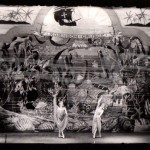
-
Davie Jones' Locker (Finale)
Robinson Crusoe (1949-1950) Davie Jones' Locker (Finale)
-
The Island
Robinson Crusoe (1949-1950) The Island
-
A Stormy Sea
Robinson Crusoe (1949-1950) A Stormy Sea
-
Robinson Crusoe's Snack Bar
Robinson Crusoe (1949-1950) Robinson Crusoe's Snack Bar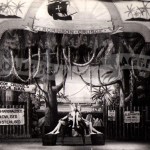
-
Back To Glasgow
Robinson Crusoe (1949-1950) Back To Glasgow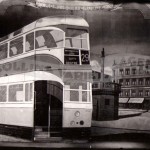
-
Robinson's Palace
Robinson Crusoe (1949-1950) Robinson's Palace
Babes in the Woods (1950-1951)
-
Entering the Town
Babes in the Woods (1950-1951) Entering the Town
-
The Town Square
Babes in the Woods (1950-1951) The Town Square
-
In the Schoolroom
Babes in the Woods (1950-1951) In the Schoolroom
-
In the Gardens
Babes in the Woods (1950-1951) In the Gardens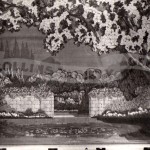
-
The Babe's Playroom
Babes in the Woods (1950-1951) The Babe's Playroom
-
Fairyland(1st Rise)
Babes in the Woods (1950-1951) Fairyland(1st Rise)
-
Fairyland(2nd Rise)
Babes in the Woods (1950-1951) Fairyland(2nd Rise)
-
Fairyland(Full Scene)
Babes in the Woods (1950-1951) Fairyland(Full Scene)
-
Nottingham Fair
Babes in the Woods (1950-1951) Nottingham Fair
-
The Path to the Woods
Babes in the Woods (1950-1951) The Path to the Woods
-
In the Dark Woods
Babes in the Woods (1950-1951) In the Dark Woods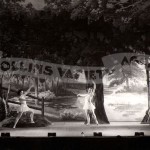
-
The Grand Old Duke of York
Babes in the Woods (1950-1951) The Grand Old Duke of York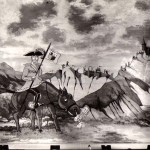
-
The Castle
Babes in the Woods (1950-1951) The Castle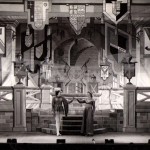
Jack and the Beanstalk (1951-1952)
-
The Village of Dooly-Doo
Jack and the Beanstalk (1951-1952) The Village of Dooly-Doo
-
The Market Place
Jack and the Beanstalk (1951-1952) The Market Place
-
A Village Street
Jack and the Beanstalk (1951-1952) A Village Street
-
At the Dentist
Jack and the Beanstalk (1951-1952) At the Dentist
-
Dame Trot's Cottage
Jack and the Beanstalk (1951-1952) Dame Trot's Cottage
-
Rainbow Land (First Rise)
Jack and the Beanstalk (1951-1952) Rainbow Land (First Rise)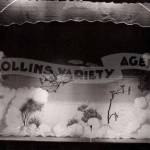
-
Rainbow Land (Second Rise)
Jack and the Beanstalk (1951-1952) Rainbow Land (Second Rise)
-
Rainbow Land (Third Rise)
Jack and the Beanstalk (1951-1952) Rainbow Land (Third Rise)
-
Tumble Down Village
Jack and the Beanstalk (1951-1952) Tumble Down Village
-
The Castle Gates
Jack and the Beanstalk (1951-1952) The Castle Gates
-
A Dungeon in the Castle
Jack and the Beanstalk (1951-1952) A Dungeon in the Castle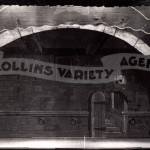
-
The Giant's Kitchen
Jack and the Beanstalk (1951-1952) The Giant's Kitchen
-
Contrasts
Jack and the Beanstalk (1951-1952) Contrasts
-
Jack Trot's Palace
Jack and the Beanstalk (1951-1952) Jack Trot's Palace
Humpty Dumpty (1952-1953)
-
The King's Castle
Humpty Dumpty (1952-1953) The King's Castle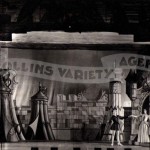
-
The King's Castle (Humpty Dumpty has had a great fall)
Humpty Dumpty (1952-1953) The King's Castle (Humpty Dumpty has had a great fall)
-
A Lounge at the Castle
Humpty Dumpty (1952-1953) A Lounge at the Castle
-
The Courtyard of the Castle
Humpty Dumpty (1952-1953) The Courtyard of the Castle
-
The Exterior of the Castle
Humpty Dumpty (1952-1953) The Exterior of the Castle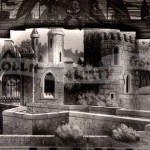
-
The Fairy Glen
Humpty Dumpty (1952-1953) The Fairy Glen
-
A Village in Cardonia
Humpty Dumpty (1952-1953) A Village in Cardonia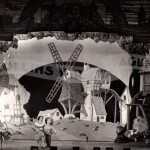
-
Humpty Dumpty Front Cloth Running Tabs
Humpty Dumpty (1952-1953) Humpty Dumpty Front Cloth Running Tabs
-
Ballroom of the Castle
Humpty Dumpty (1952-1953) Ballroom of the Castle
-
Winter Wonderland
Humpty Dumpty (1952-1953) Winter Wonderland
-
A Room in the Castle
Humpty Dumpty (1952-1953) A Room in the Castle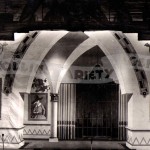
-
The Palace Gardens
Humpty Dumpty (1952-1953) The Palace Gardens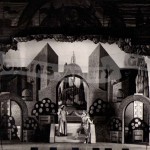
Dick Whittington (1953-1954)
-
Cheapside
Dick Whittington (1953-1954) Cheapside
-
Petticoat Lane
Dick Whittington (1953-1954) Petticoat Lane
-
Inside Fitzwarren's Stores
Dick Whittington (1953-1954) Inside Fitzwarren's Stores
-
The Road to Highgate
Dick Whittington (1953-1954) The Road to Highgate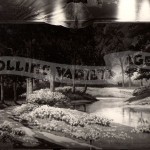
-
Highgate Hill (This scene is overpainted for use with UV lighting)
Dick Whittington (1953-1954) Highgate Hill (This scene is overpainted for use with UV lighting)
-
On Board the Good Ship 'Adventure'
Dick Whittington (1953-1954) On Board the Good Ship 'Adventure'
-
Davy Jones' Locker
Dick Whittington (1953-1954) Davy Jones' Locker
-
A Desert Island
Dick Whittington (1953-1954) A Desert Island
-
The Palace of Morocco
Dick Whittington (1953-1954) The Palace of Morocco
-
The Guildhall
Dick Whittington (1953-1954) The Guildhall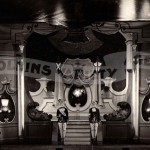
Red Riding Hood (1954-1955)
-
Prologue 'The Never Never Land'
Red Riding Hood (1954-1955) Prologue 'The Never Never Land'
-
The Village of Derry-Down-Dey
Red Riding Hood (1954-1955) The Village of Derry-Down-Dey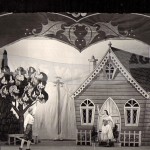
-
A Village Street
Red Riding Hood (1954-1955) A Village Street
-
The Wolf's Lair
Red Riding Hood (1954-1955) The Wolf's Lair
-
The Village School
Red Riding Hood (1954-1955) The Village School
-
A Path in the Wood
Red Riding Hood (1954-1955) A Path in the Wood
-
Bluebell Wood
Red Riding Hood (1954-1955) Bluebell Wood
-
Nursery Land
Red Riding Hood (1954-1955) Nursery Land
-
Dr Squill's Surgery
Red Riding Hood (1954-1955) Dr Squill's Surgery
-
The Depths of the Forest
Red Riding Hood (1954-1955) The Depths of the Forest
-
Front Cloth Running Tabs
Red Riding Hood (1954-1955) Front Cloth Running Tabs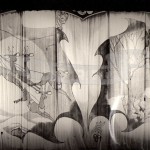
-
Grannie's Cottage
Red Riding Hood (1954-1955) Grannie's Cottage
-
Communityland
Red Riding Hood (1954-1955) Communityland
-
The Palace Bal Masque
Red Riding Hood (1954-1955) The Palace Bal Masque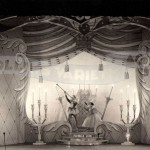
Babes in the Wood (1955-1956)
-
Front Cloth Running Tabs
Babes in the Wood (1955-1956) Front Cloth Running Tabs
-
Outside the Baronial Hall
Babes in the Wood (1955-1956) Outside the Baronial Hall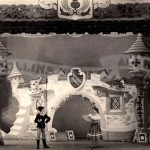
-
Martha's Cottage
Babes in the Wood (1955-1956) Martha's Cottage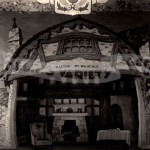
-
The Turret Bedroom
Babes in the Wood (1955-1956) The Turret Bedroom
-
A Room in the Baron's Castle
Babes in the Wood (1955-1956) A Room in the Baron's Castle
-
Journey into Space
Babes in the Wood (1955-1956) Journey into Space
-
Journey into Space 2
Babes in the Wood (1955-1956) Journey into Space 2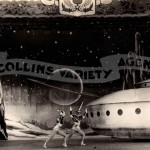
-
Nottingham Fair
Babes in the Wood (1955-1956) Nottingham Fair
-
Beneath the Old Oak
Babes in the Wood (1955-1956) Beneath the Old Oak
-
The Heart of the Wood
Babes in the Wood (1955-1956) The Heart of the Wood
-
Home Once More
Babes in the Wood (1955-1956) Home Once More
-
Robin Hood's Castle
Babes in the Wood (1955-1956) Robin Hood's Castle